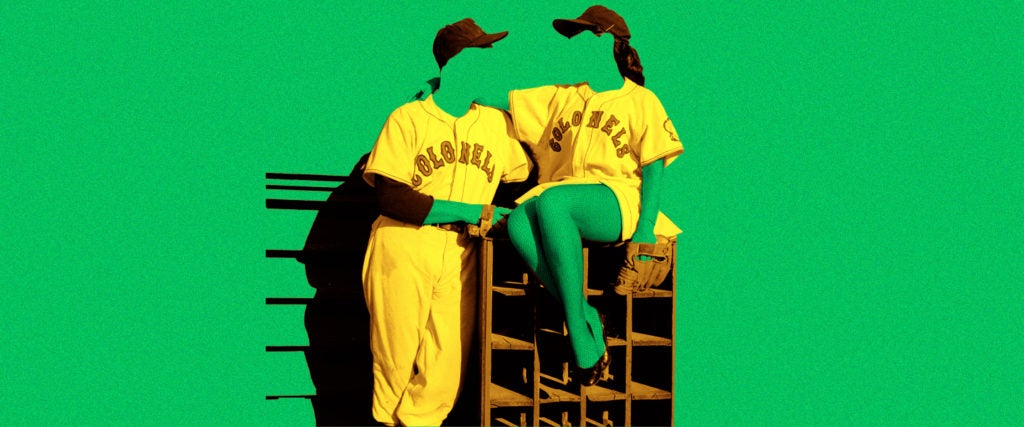In Eighth Grade, a charming coming-of-age film released in 2018, there’s a tense scene in the back of a car. It involves the film’s awkward 14-year-old protagonist, Kayla, and an older high school boy, Riley, who drops her at home after the two hang out with a wider group of friends at the mall. Riley pushes Kayla into a charged game of truth or dare, and when she nervously selects “truth,” he asks about her (nonexistent) sexual experience:
RILEY: Okayyy… Uhhhh… How far have you gone?
KAYLA: …How far have I gone?
RILEY: Yeah, like… first base, second base —
KAYLA: Oh yeah, totally, I know, I was just thinking… trying to remember… like recently or all-time?
RILEY: All time.
KAYLA: Hmmm… Probably… third?
RILEY: Whoa.
KAYLA: You know what, actually just second I think, I get confused and mix second and third up sometimes, ha ha.
It progresses into a gripping and horrifying scene that shows Riley attempting to pester, grind down and guilt Kayla into hooking up with him, all rendered in eerily accurate detail. But one aspect of the dialogue struck me as potentially unrealistic: Do teens really still use the clumsy old baseball analogy for sex?
I’m not the only person who’s wondered this, either. In their Ask a Schmuck advice column, author Colin Atrophy Hagendorf also questions the relevance of the “first base,” “second base” framework. “I’m not sure if kids today still talk about the old baseball analogy,” they write, “but approaching sex with that kind of dogma, or an expectation that it can only ‘progress’ in a specific linear fashion, forecloses on a lot of possibilities … and creates a sense of momentum for both partners that can be extremely limiting and lead to some pretty uncomfortable outcomes.”
For answers on whether the baseball analogy is still being used by young people, I sought the insight of 12 teens and almost-teens on Twitter (two were 20 years old). The consensus seemed to be that the baseball analogy is familiar, but not in regular use. “I don’t know that it’s in active rotation much,” says Emma, a 19-year-old who went to high school in New Jersey, in a representative comment. “But it’s not, like, Stone Age — people would know what you’re talking about.”
The fact that there’s broad familiarity with the analogy even though it’s not really in use among teens seems to be because of its persistence in pop culture. Movies like Eighth Grade continue to use it, even though teens don’t. “I’ve never heard anyone use the base analogy besides in movies or TV,” explains Jen, a 19-year-old from California. “It’d be understandable in conversation because of its presence in pop culture, but it feels a little weird to use in real-life conversations.”
Admittedly, everyone I speak to is an older teen, and some wonder whether kids with less sexual experience might still brag using the baseball analogy, especially if they’re boys (“I got to second base with her!”). But none of my sources can remember hearing it much or using it themselves when they were younger, which leads me to conclude that, these days, it’s probably an outdated conceptual tool that says less about how teens think about sex and more about how adults think teens think about sex.
I’m a millennial in my early thirties, and even though I think the baseball analogy was more of a pop-culture phenomenon than organic teen lingo even in my day, it definitely influenced how my cohort thought about sex. There was a hierarchy of sex acts — penis-in-vagina intercourse was “more” than oral sex — and you had to approach them not only in ascending order, but at the right speed, too. Progress too fast through the bases, and you were a slut; too slowly, and you weren’t cool or “down.” You did all of this with the opposite sex, of course, because it was way less okay to be gay back then.
The baseball analogy doesn’t make a lot of sense to a generation raised with easy access to every kind of porn imaginable; it’s way too cutesy and obfuscatory. “Sex hasn’t been a mystifying thing to people my age, so language around it doesn’t really need to be steeped in metaphor,” Jen explains. “We could easily access porn since elementary school — plenty of my guy friends tell me they’ve been in the know about sex because of their free range on Google as a kid — and social media is often so candid about sex.”
Maddie, a 20-year-old who went to high school in North Carolina, agrees. “I’d say that now, the term ‘hooking up’ has become a general catch-all term, and when you talk about specific acts, you just call them what they are,” she says. “Porn has made the act of having sex more performative. So, like, the Gluck Gluck 9000 and other terms from [Barstool Sports sex podcast] Call Her Daddy have definitely been ingrained in sex culture. Kind of like teens learning to do makeup on YouTube, teens now have access to resources to teach them how to give a good blowjob.” In other words, if the name of a blowjob technique that requires you to be “so sloppy that like your mascara is running, you’re drenched, you look like you got hit by a bus or you just took a fucking shower” is common parlance among teens, it’s a little quaint to still be talking about “third base.”
The baseball analogy is also way too heteronormative for this very gay demographic, and its focus on certain prized sex acts feels prescriptive and limited, as does the fact that it leaves out so much — like all butt stuff, for example. “I don’t think PIV intercourse is this big event that you’re working toward anymore,” Maddie continues. “Like for myself and a lot of my friends, it happened once, but it may not be what we prefer to do sexually, especially for my non-straight friends.”
Maddie says that, due to a confluence of factors including “porn, the normalization of gay people in American culture and Cosmo/Playboy/Teen Vogue all getting woke to some extent,” teens are now steeped in a sex-positive framework that’s less heteronormative and limiting. “Society in general is more sex-positive now, and more focused on female pleasure,” she says. “Obviously we still have a long way to go and the focus is still on pretty white women and straight couples, but female pleasure is at least part of the conversation now and sex talk is less coy.”
She’s aware that this is a relatively recent development, and that previous generations had a totally different framework for discussing sexuality. The baseball analogy made more sense in the era I grew up in, when female sexual agency was minimized and women and girls were considered sexual gatekeepers. “The male initiator/female gatekeeper model is the bread and butter of our culture’s discourse on sex and sexuality,” Marina N. Bolotnikova and Louis R. Evans wrote in the Harvard Crimson in 2012. “We are exposed to it everywhere — in films and TV shows, in popular music and in conversations with our peers and even well-meaning sex educators. … The gatekeeper model is such an ingrained component of our cultural vocabulary that female sexual agency, when it is not invisible, is deemed obscene.”
Anyone my age or older will also remember a pop culture and media environment dominated by the male gaze, in which women were expected to be sexually alluring to men but weren’t treated as sexual agents whose pleasure was important in its own right. “I can’t imagine growing up in the early 2000s,” Maddie says, “and your only basis for female sexuality being, like, Victoria’s Secret and Carl’s Jr. ads.”
When I tell her that this is the exact media environment I was raised in, she’s aghast on my behalf. “A nightmare luv, litcherally a nightmare,” she DMs jokingly. “I can’t imagine that.”

